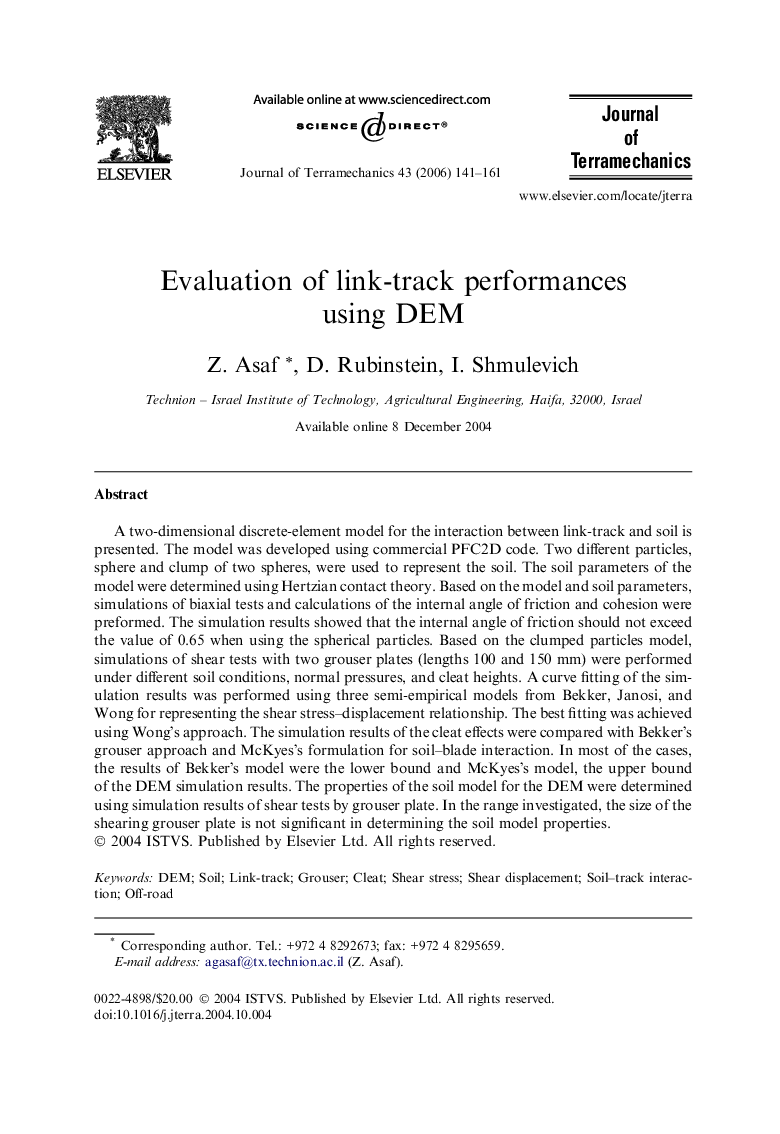| Article ID | Journal | Published Year | Pages | File Type |
|---|---|---|---|---|
| 799278 | Journal of Terramechanics | 2006 | 21 Pages |
A two-dimensional discrete-element model for the interaction between link-track and soil is presented. The model was developed using commercial PFC2D code. Two different particles, sphere and clump of two spheres, were used to represent the soil. The soil parameters of the model were determined using Hertzian contact theory. Based on the model and soil parameters, simulations of biaxial tests and calculations of the internal angle of friction and cohesion were preformed. The simulation results showed that the internal angle of friction should not exceed the value of 0.65 when using the spherical particles. Based on the clumped particles model, simulations of shear tests with two grouser plates (lengths 100 and 150 mm) were performed under different soil conditions, normal pressures, and cleat heights. A curve fitting of the simulation results was performed using three semi-empirical models from Bekker, Janosi, and Wong for representing the shear stress–displacement relationship. The best fitting was achieved using Wong’s approach. The simulation results of the cleat effects were compared with Bekker’s grouser approach and McKyes’s formulation for soil–blade interaction. In most of the cases, the results of Bekker’s model were the lower bound and McKyes’s model, the upper bound of the DEM simulation results. The properties of the soil model for the DEM were determined using simulation results of shear tests by grouser plate. In the range investigated, the size of the shearing grouser plate is not significant in determining the soil model properties.
